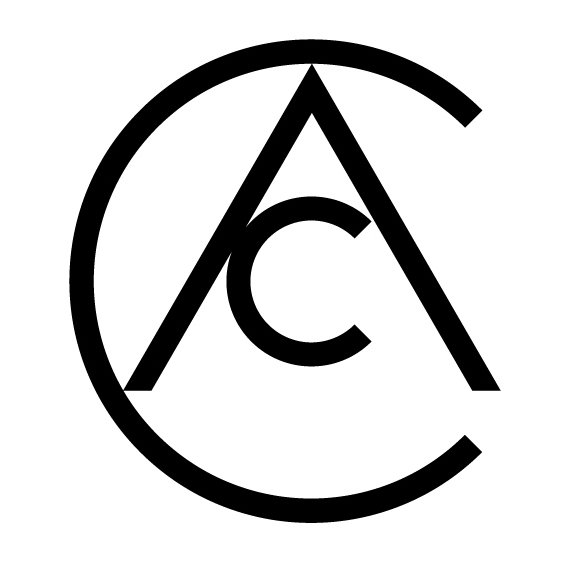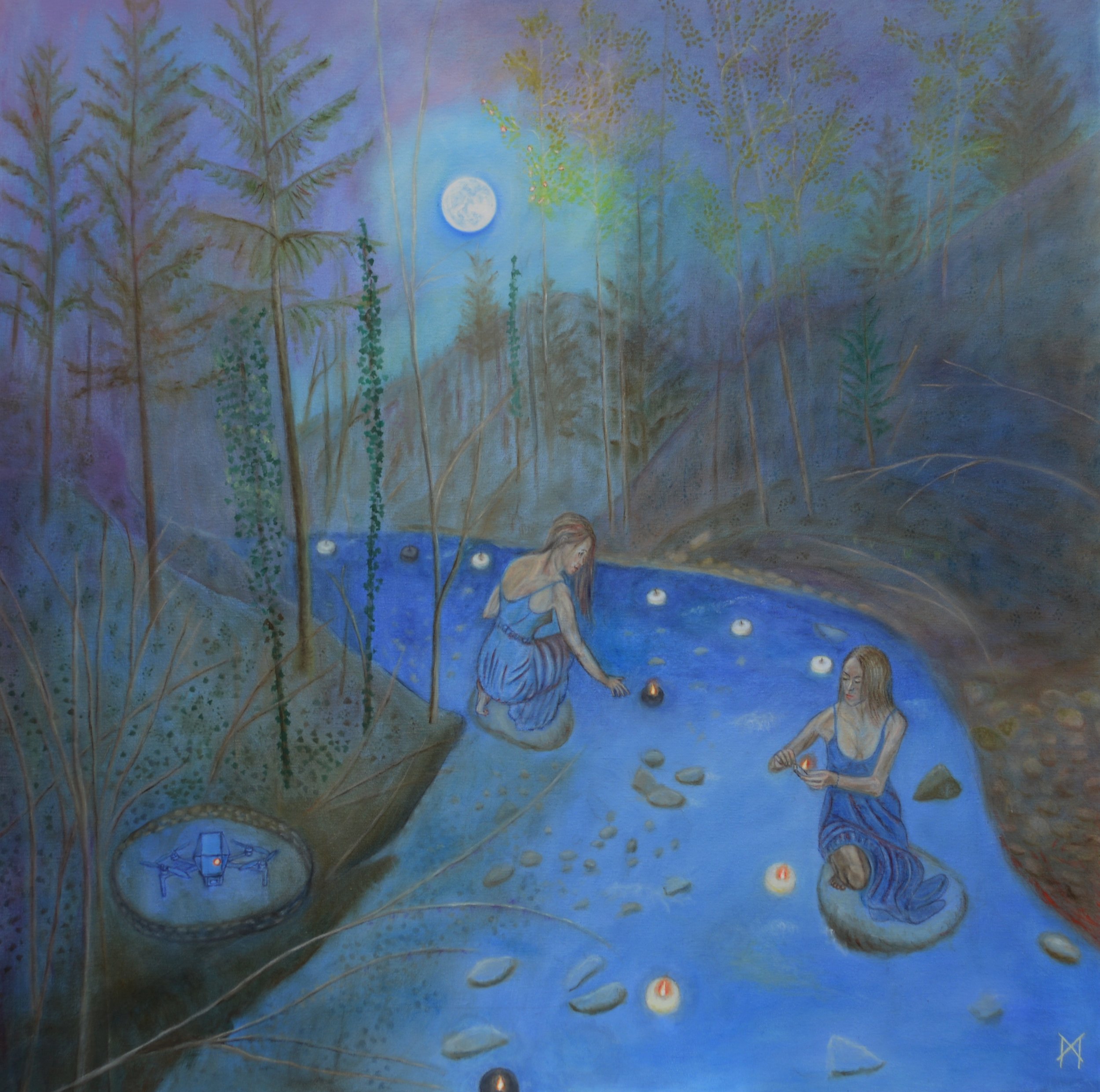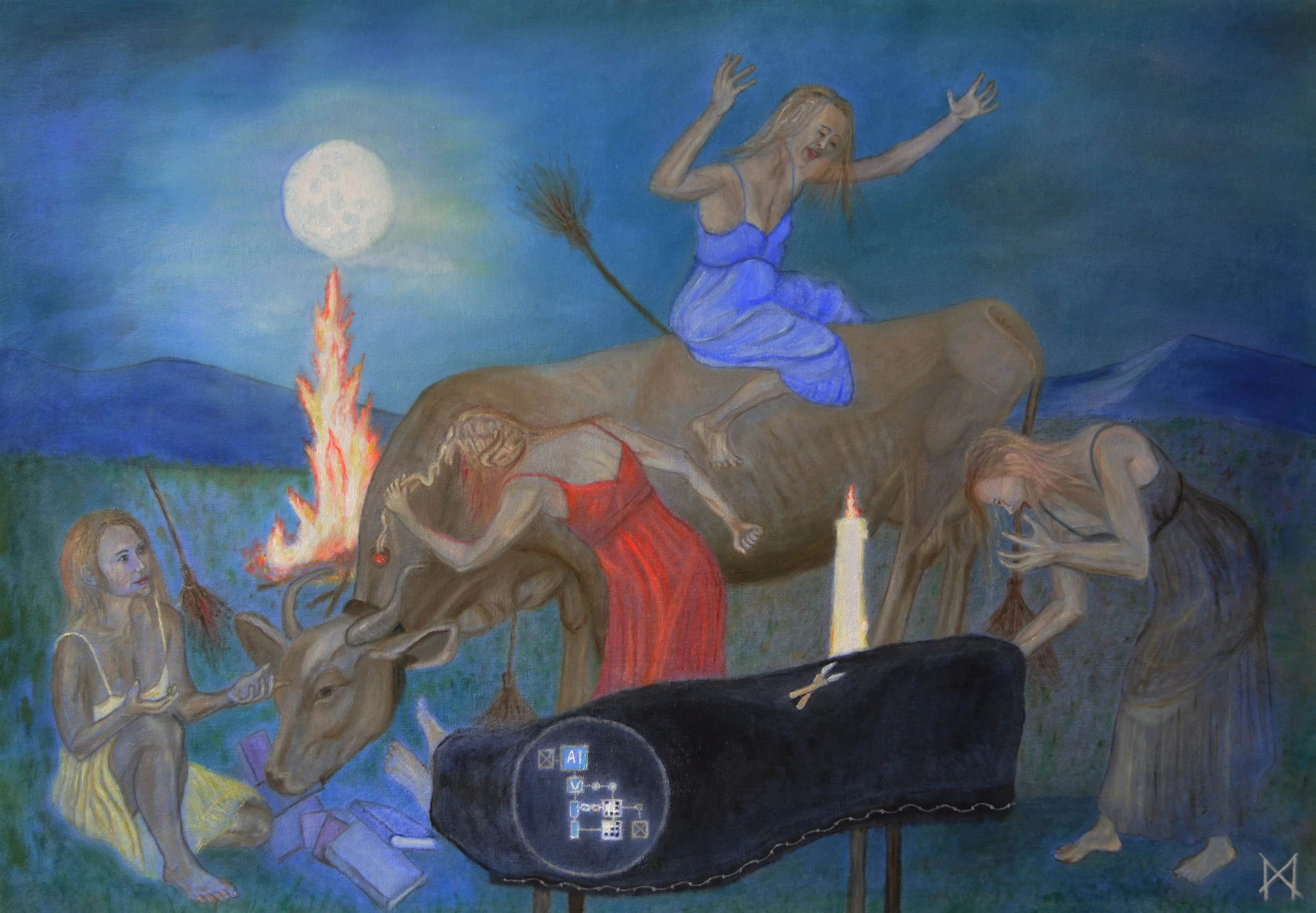Interview with Margaretha Gubernale
www.margarethagubernale.org
www.gubernale.com
As an international artist, MARGARETHA GUBERNALE was born in Zug, Switzerland, on June 9, 1941, where she also has her studio EDERA. She is mother of two adult children, Mario and Helena, and she is widowed, and she sacrificed her life to the art and developed her own magical and symbolic style. She plays also church organ and writes compositions.
MARGARETHA GUBERNALE made many group and solo exhibitions worldwide, including on 1993 in the MONTSERRAT GALLERY, in 2011 in the AGORA GALLERY and in 2012 in the BROADWAY GALLERY, all of them in New York USA, as well as exhibitions in Miami and Canada, in Germany, France and, among other expositions, a group exhibition in the Eiffel Tower, Salle Gustave Eiffel, Paris France in 2014. She took part in further exhibitions in England, Spain, Malta, Austria, China, Switzerland and numerous in Italy.
Among other exhibitions, she received the 1st prize 2016 MARGHERITA HACK, from SPOLETO ARTE, for an exhibition. In February 2018 and 2020 she took part in the Expositions Art Capital, Grand Palais-Réunion des Musées Nationaux, Société des Artistes Indépendants, Paris France, also in 2024 in the Art Capital at the Grand Palais Éphémère, Paris, France, as well as in 2019, 2020 and 2021 at Swissartexpo in Zurich Main Station, Switzerland.
In 2021 she participated in the three-month exhibition POETA MASSIMO TROISI, film director and actor of "Il Postino", at Castel dell’Ovo, Napoli, Italy, also in the exhibition in Procida and in the Exposition Artisti da Museo in Rome, Italy. In 2023 she held numerous digital exhibitions at various locations abroad with Artboxy and a digital solo exhibition at EuropaArt in Amsterdam. She also exhibited in the MAD Gallery and with her in Times Square she had some of her pictures streamed to one of the screens there in four episodes. She has received many awards, including a gold medal at the 2008 Olympic Fine Art in Beijing China.
In 2017 she got the 60 Top Artists Award, Metropolitan Art Museum Las Vegas USA, and 2020 the Top 60 Masters Award, ATIM, Grimandi Gallery, New York USA, and the Paolo Levi Prize at Palazzo Clerici, Milano Italy. In 2024 she was honored with the Trophy by the organization EDMC-Europe, Les éditions des musées et de la culture-Europe.
2024 She participated also through the organization Contemporary Art Management in the month-long aircraft exhibition at Vueling, Spain. She is nominated in many artbooks and magazines, so 2024 in Art Leaders of Tomorrow and Future of ART Global with Masterpiece Award from Contemporary Art Curator. In 2025, she received the EL GRECO Award and the Legends of our Time Award from Contemporary Art Curator and Contemporary Art Collector.
Margaretha, your recent painting, The Declaration Day of the Angular Moon, marks a striking cosmological rupture, replacing the familiar lunar circle with an unsettling, angular geometry. Could you speak about the symbolic, perhaps even prophetic, implications of this angular moon? What “declaration” is being made, and how does the shift from organic roundness to sharp angularity mirror the psychic or environmental tensions of our time?
The square moon represents everything related to unnaturalness and the destruction of individuality, everything that goes against nature. The neighbouring celestial bodies in the picture are round, according to the natural laws of old. I painted Venus yellow like sulphur, Mars red like iron, and Earth blue like water, in the eternally enduring primary colours. A violent transformation is taking place in this picture, a spiritual and material depletion of resources. At the same time, humanity is bound by the umbilical cord to the ironclad laws of the world, where it must cultivate crops to survive, instead of waging war and searching for a new Earth, only to ruin that one as well.
In The Sword of Damocles Over Our Heads, you seem to translate a classical allegory into a contemporary existential image. How do you reinterpret this ancient warning within our present-day context, politically, environmentally, or spiritually? And what role does the delicate human figure play beneath this suspended threat?
This war debris out in orbit, not so far from Earth, threatens Earth both physically and mentally. The arms of certain satellites, intended in peacetime to clear space debris, recklessly threaten us in times of war, as does surveillance by unethical individuals and criminals.
Looking across your recent works, such as Global Aqueduct – My Legacy and the deeply atmospheric forest scenes, there is a persistent dialogue between elemental forces and human vulnerability. How do you envision the relationship between the individual and overwhelming cosmic or ecological systems in your current artistic phase?
I expressly desire this to encourage engagement with the Earth's resources, taking into account humanity's vulnerability to grain and water shortages, and supporting nature's development by treating the soil with greater respect, particularly irrigation, and allowing water to circulate and purify globally, so that it can be shared economically via aqueducts. Ultimately, humanity, with its innate abilities, has a healthy role to play in creation.
Many of your female figures appear in states of contemplation, ritual, or revelation, whether kneeling on river stones, engaging with DNA-like strands of light, or confronting the moon. Do these recent figures function as self-projections, mythic archetypes, or witnesses to a metaphysical drama unfolding through nature?
The figures allude to the practice of spirituality, to love of nature and humanity. Dialogue with God expands thought and the senses. The strands of light in my paintings symbolize forces, for example, the sun with its warmth and growth power, and the moon with its effect on water, especially on the sea with its ebb and flow, and on births, since humans are largely composed of water.
Your landscapes, particularly in Holy Forest with Yggdrasil, The White Willow, and the river scenes illuminated by moonlight, possess a sensuous inner luminosity, even when the palette veers into cooler, nocturnal tones. Could you discuss how you conceive of “light” not merely as illumination, but as a metaphysical presence within these environments?
Light bodies, especially natural ones like the sun, moon, and stars, accelerate our thinking and enhance our emotions. In my paintings, the moon embodies the comforting light of the night and the enchantment of dark tones. The light represents the divine effect.
Several of your newest works embed mechanical, scientific, or technological structures, pipes, DNA helices, and drones within lyrical natural settings. How do you see this interweaving of artificial and organic systems developing in your upcoming work? Is this a commentary on hybridity, intrusion, or the inevitability of technological evolution?
Technology is a wonderful aid to humanity, provided it is based on ethical principles. Therefore, it deserves to be either portrayed as ethical or condemned as unethical. Those who strive forward without regard for the human context will later have to painstakingly pull technology out of the mire and reverse everything. That will be bitter. Therefore, thoughtful individuals who are also artists are a great blessing.
In The Widening, the ascent of your figures against an expansive horizon evokes both transcendence and vulnerability. Do you see this “widening” as a personal spiritual expansion, or as a transformation you perceive in the collective human condition? How does this relate to the angular moon and Damoclean sword themes?
Our connection to God resides in the respectful and humble observation of creation and leads to an expansion beyond the physical. In this image of expansion, the divine DNA symbolically meets the human DNA. There is no image that can describe God. It transcends our understanding.
Your painting, Three Graces on Lake Zug, reimagines a classical allegory through a contemporary filter; smartphones become the objects of focus rather than drapery or gesture. How consciously do you approach the tension between timeless mythology and the hypermodern digital gaze?
The inspiration for the image of the three Graces on Lake Zug was a comparison with my youth, when we were fascinated by hula-hop rings, which we moved for hours with hip swings and believed we had found manna.
Your biography reveals a life spent in intimate dialogue with art, music, and symbolic language. When you reflect on your newest works, including The Angular Moon and The Sword of Damocles, what internal or external experiences compelled you toward these more urgent, existential motifs?
I was outraged that Facebook's meta-AI is allowed to feed its AI with stolen data from PCs and websites, and to subject victims to identity theft, widespread fake news in the media, and password changes without facing any consequences. On top of that, they are allowed to publicly proclaim that artists are no longer needed and that they are ushering in a new era. I think that's certainly true for now, until their AI is completely drained of data. This would be the external trigger. The internal one follows from what has already been said.
What are you working on in this very moment? Are you developing a new symbolic cycle, a continuation of the celestial and ecological narratives, or perhaps a new exploration altogether? How does this next body of work emerge from the themes and philosophical questions that have shaped your most recent paintings?
I am currently creating a forest scene with a fountain that also serves as a signpost and is being visited by three women. One is drinking from the open stream, the second is drawing water from the basin, and the third, unable to reach the water, is holding out a chalice to the other two women. An osmotic apparatus stands beside this scene.
Holy Forest with Yggdrasil, 2014, oil on canvas, 100 cm x 100 cm
Priska ponders over the Meaning of Life, 2022, oil on canvas, 60x 60cm
Priska meditates, 2022, oil on canvas, 60 cm x 60 cm
The Widening, 2021, oil on canvas, 100 cm x 100 cm
Three Graces on the Lake Zug, 2023, oil on canvas, 60 cm x 60 cm
Uproot roots, 2023, oil on canvas, 60 cm x 60 cm
Now, 2023, oil on canvas, 100 cm x 100 cm
Mary of Hope in Autumn, 2018, oil on canvas, 80 cm x 100 cm
Global Aqueduct - My Legacy, 2021, oil on canvas, 100 cm x 100 cm
The White Willow, 2013, oil on canvas, 100 cm x 100 cm
The Sorcerer's Apprentice (with Goethe), 2024, oil on canvas, 70 x 100 cm
Revelation of the Flame of Life, 2009, oil on canvas, 100 x 100 cm
Monstrance of Quantum Leap, 2017, oil on canvas, 80 x 100 cm
Sound from Universe, 2005, oil on canvas, 180 x 120 cm
Networking, 2019, oil on canvas, 150 x 250 cm
Necromancy or the Magician on the Giant's Grave, 2014, oil on canvas, 100 x 100 cm




















